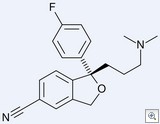
(J.Lourie) IVAX’s infringement began when it filed an abbreviated new drug application (ANDA) with the FDA for approval to manufacture a generic version of Forest Lab’s blockbuster antidepressant Lexapro. Under 35 USC 271(e)(2), the mere submission of the ANDA is considered an “act of infringement.”
At the conclusion of the case, the district court issued an injunction ordering IVAX to refrain from making or using “any products” that infringe Forest’s patent. CIPLA, IVAX’s planned distributor, was also included in the injunction.
IVAX and CIPLA both appealed the injunctions.
Overbroad Injunction: An injunction may only extend to adjudicated products (or methods) and those “not more than colorably different.” In this case, the CAFC found that the injunction language was overbroad because it applied to “any products” that infringe the patent. The court consequently modified the injunction to specifically focus on the products at issue. (Note: Under 271(e)(4), the court may issue injunctive relief to prevent the future manufacture and sale of the infringing product).
Injunction against CIPLA for Potential Contributory Infringement: IVAX is a direct infringer based on its ANDA submission. CIPLA, on the other hand, made no such submission and is not a direct infringer. Likewise, CIPLA is not a contributory infringer based on the ANDA submission. As the majority noted – “Ivax is not currently liable for infringement, as long as it is only pursuing FDA approval.”
Despite any current infringement, the Appellate Panel found that it is proper to issue an injunction to prevent potential future contributory infringement.
“[If the drug were sold] CIPLA would be contributing to the infringement by IVAX, so the injunction should cover both partners.”
Judge Shall dissented – arguing that CIPLA should not suffer under an injunction.
To continue reading, become a Patently-O member. Already a member? Simply log in to access the full post.